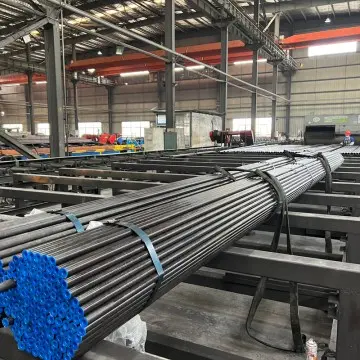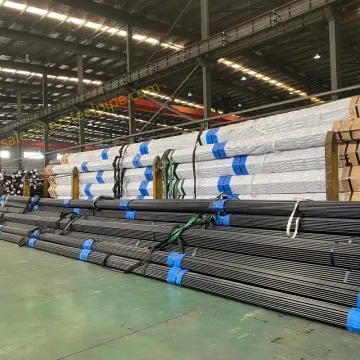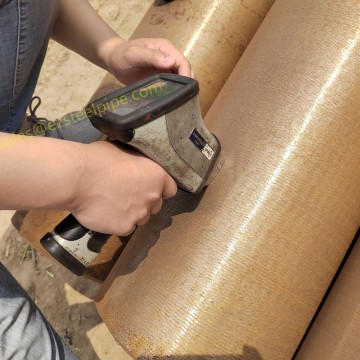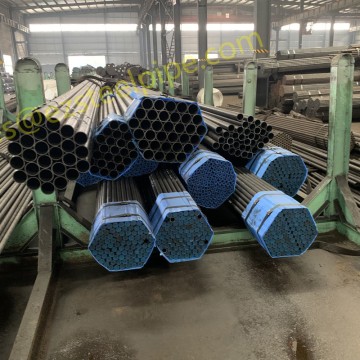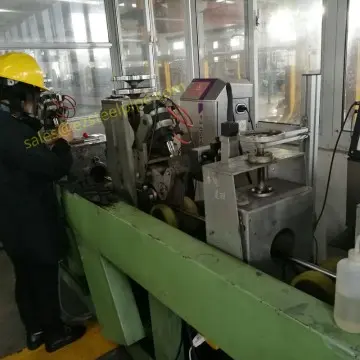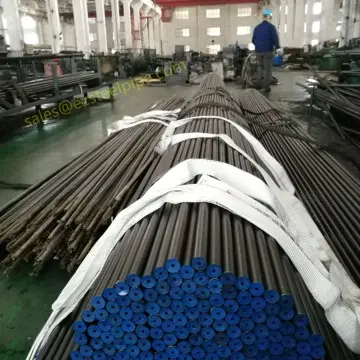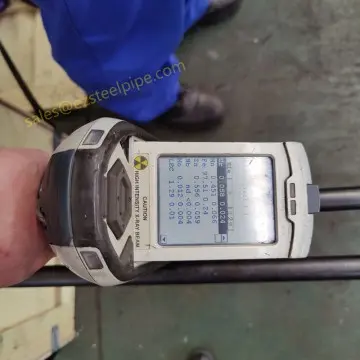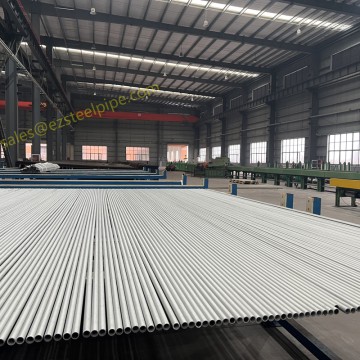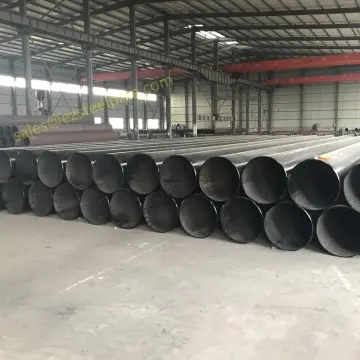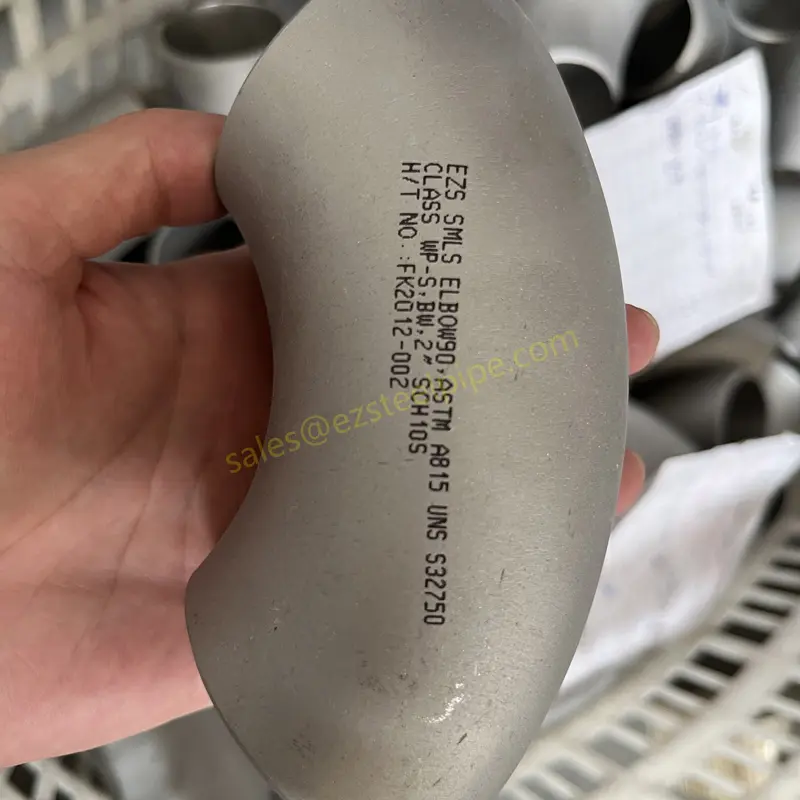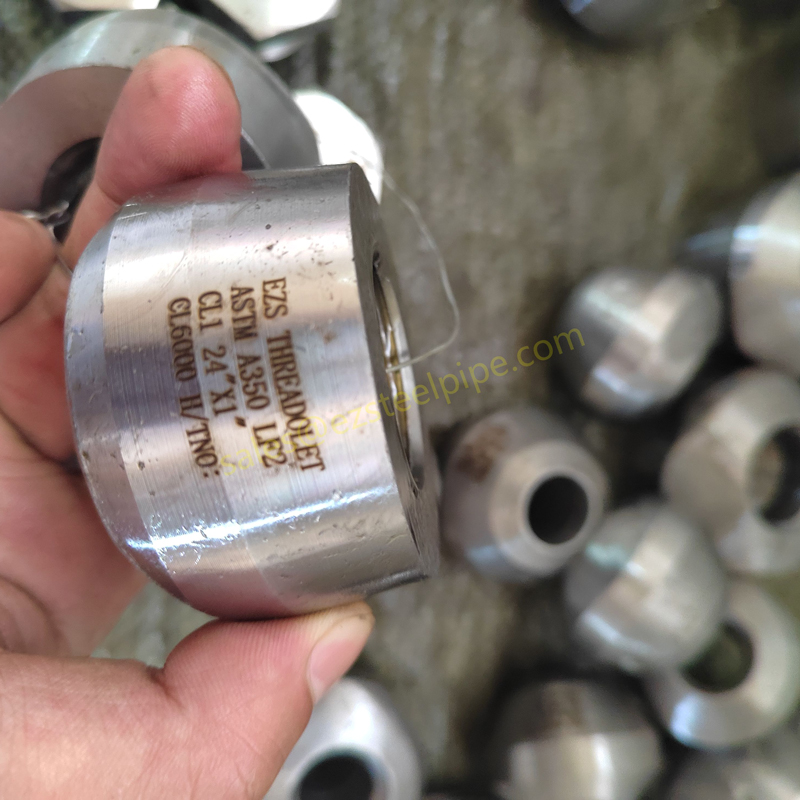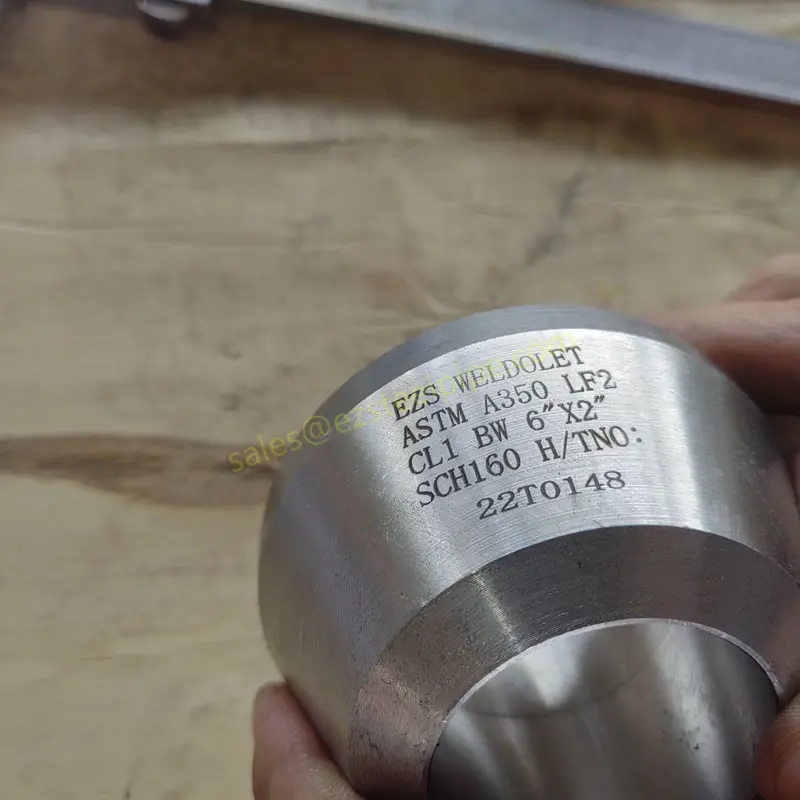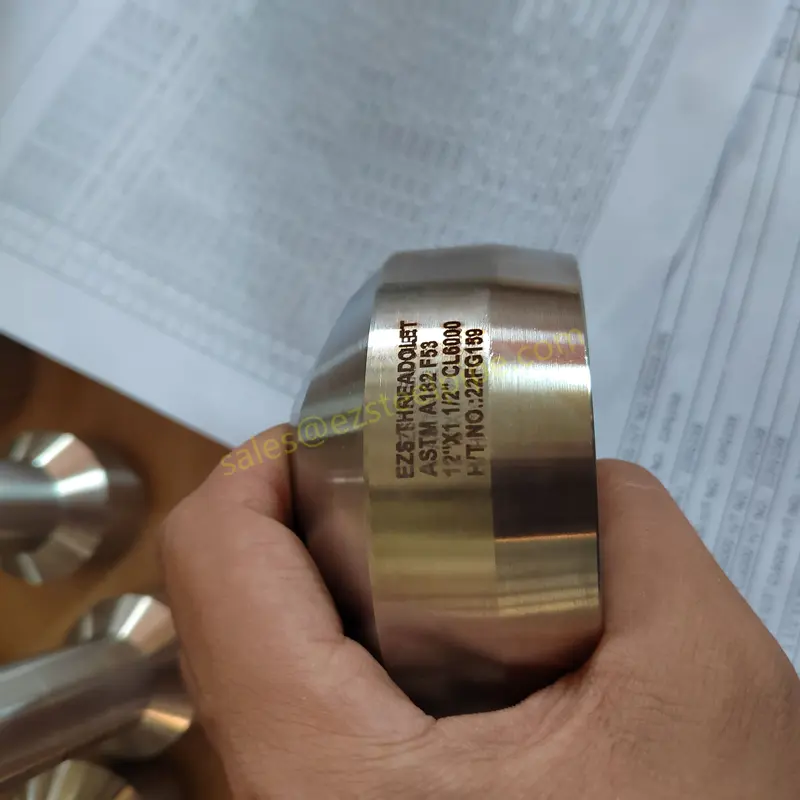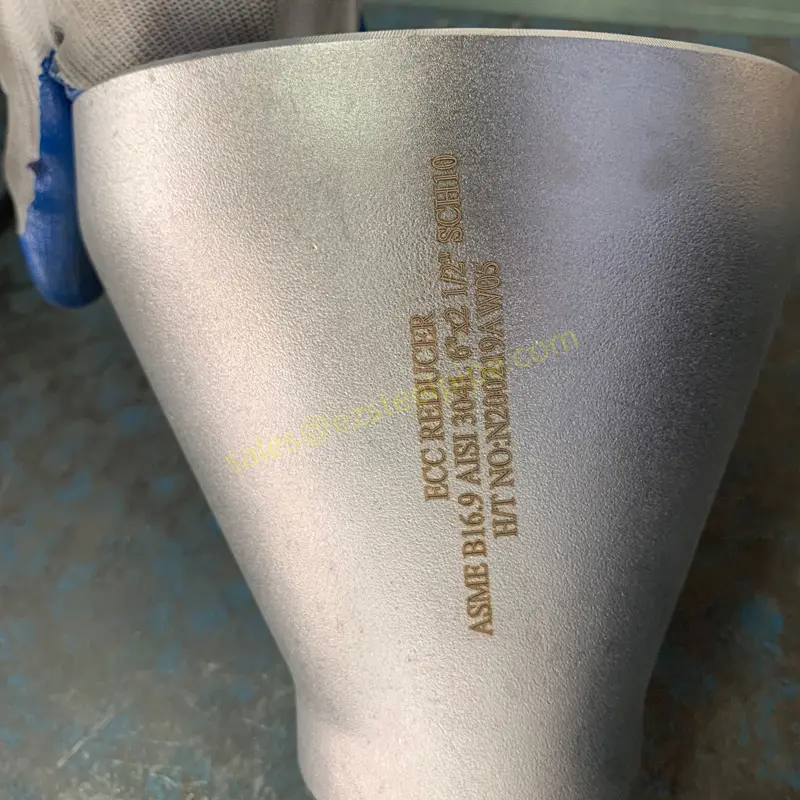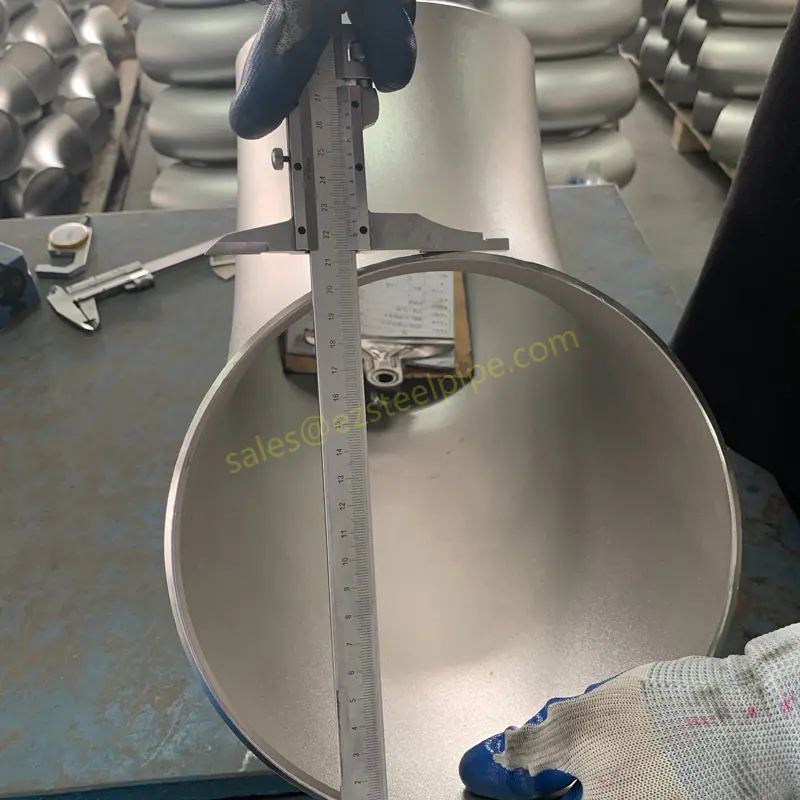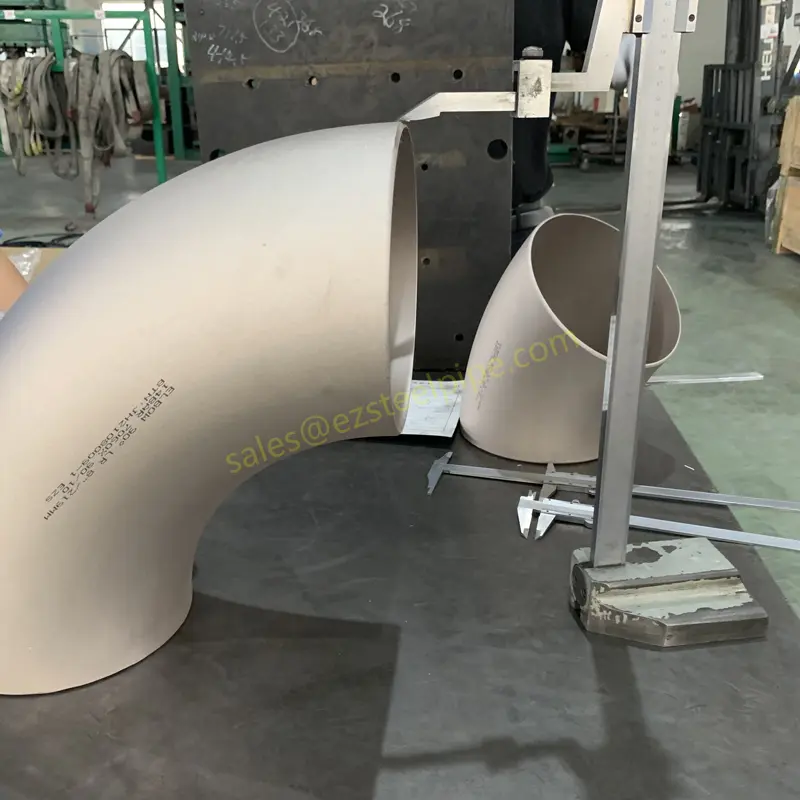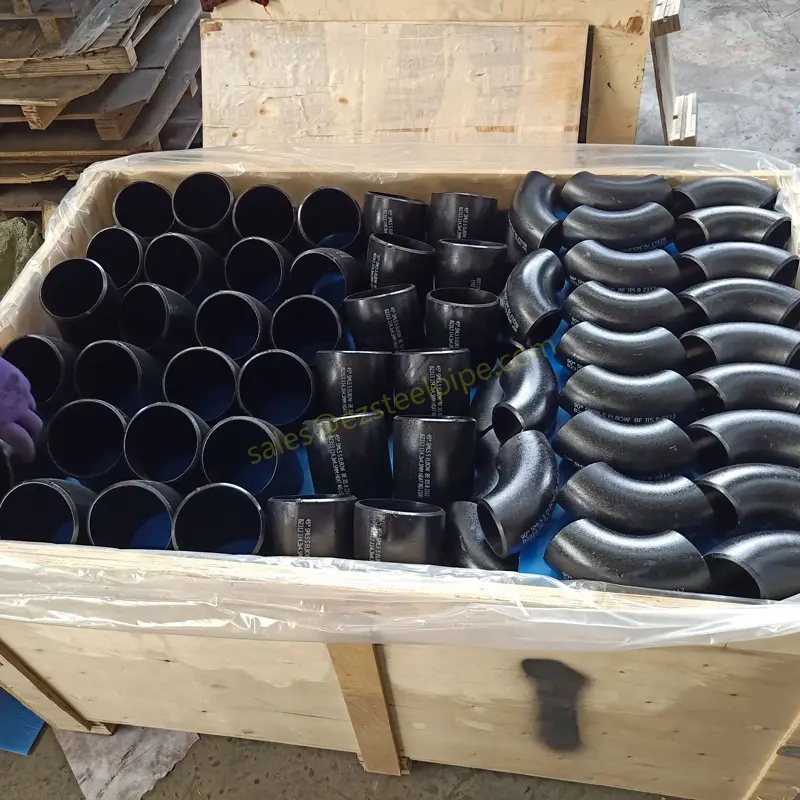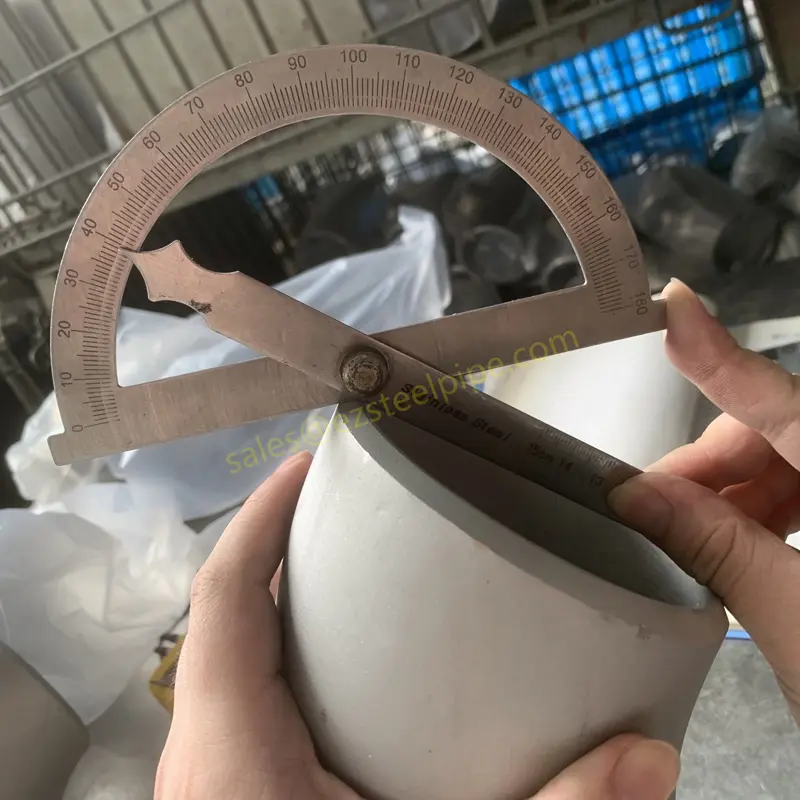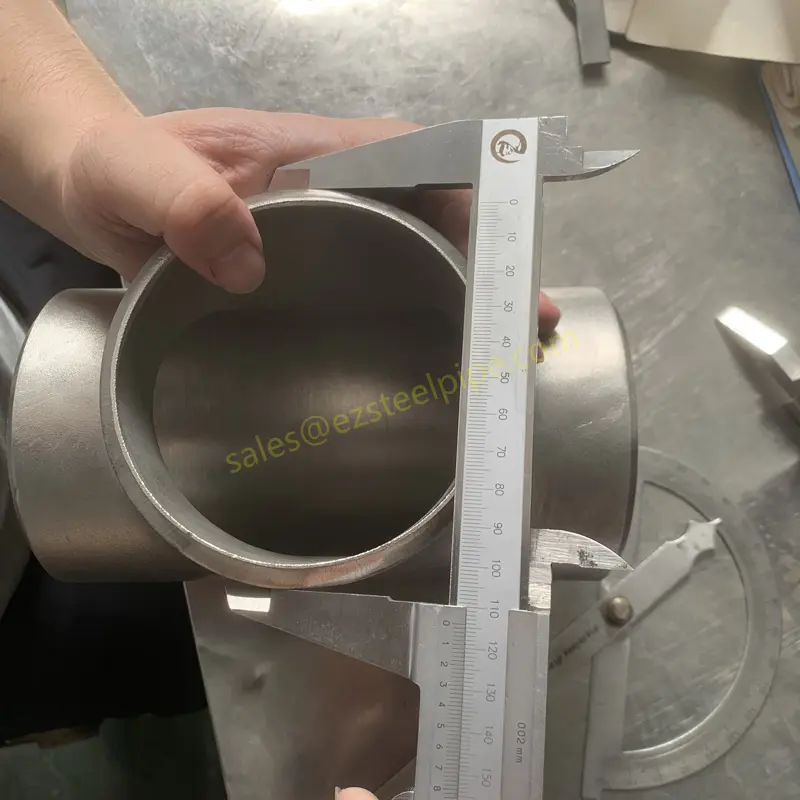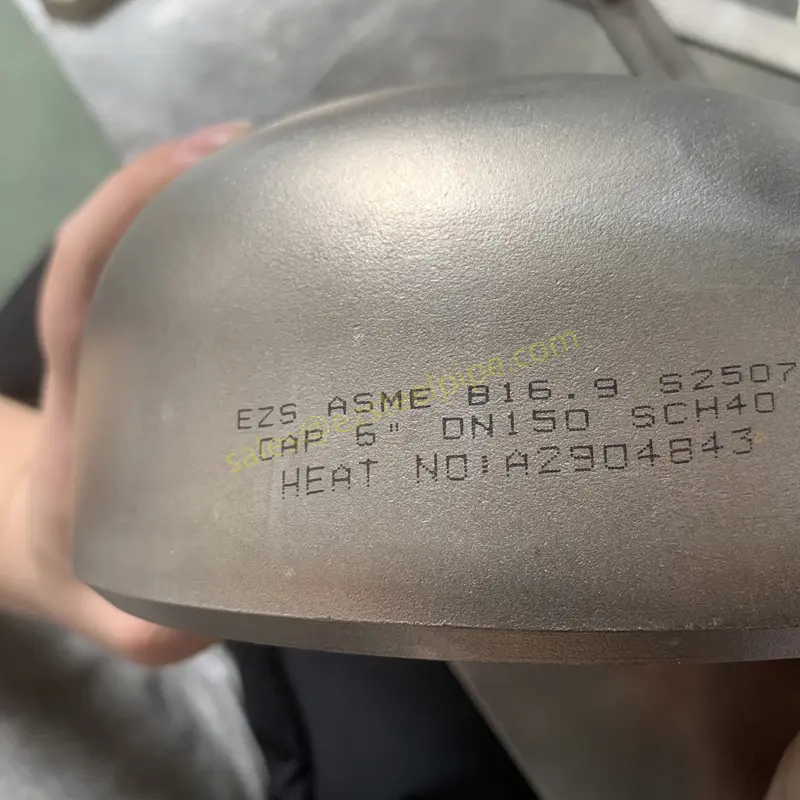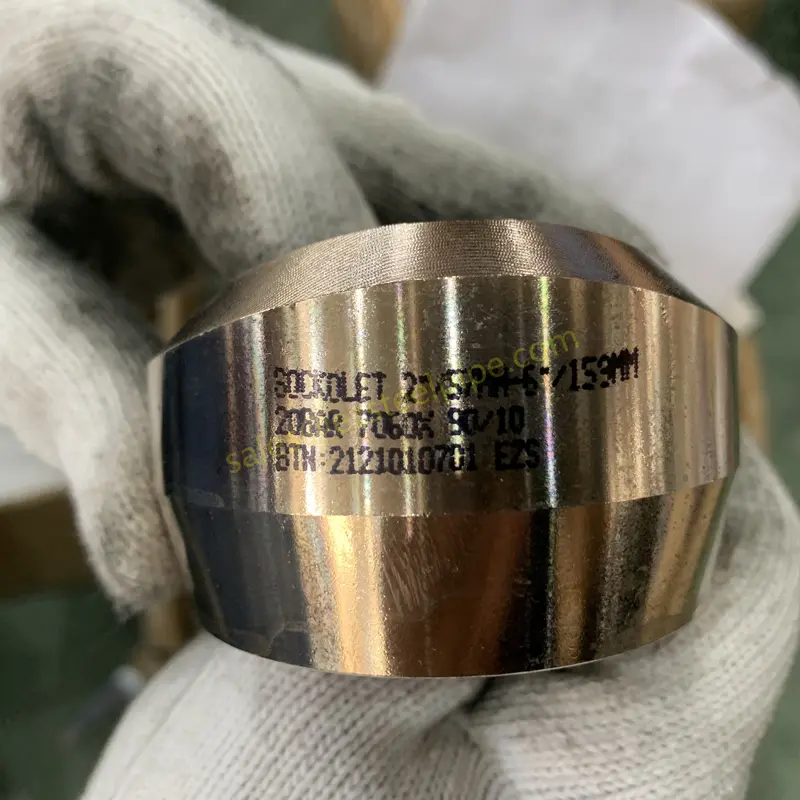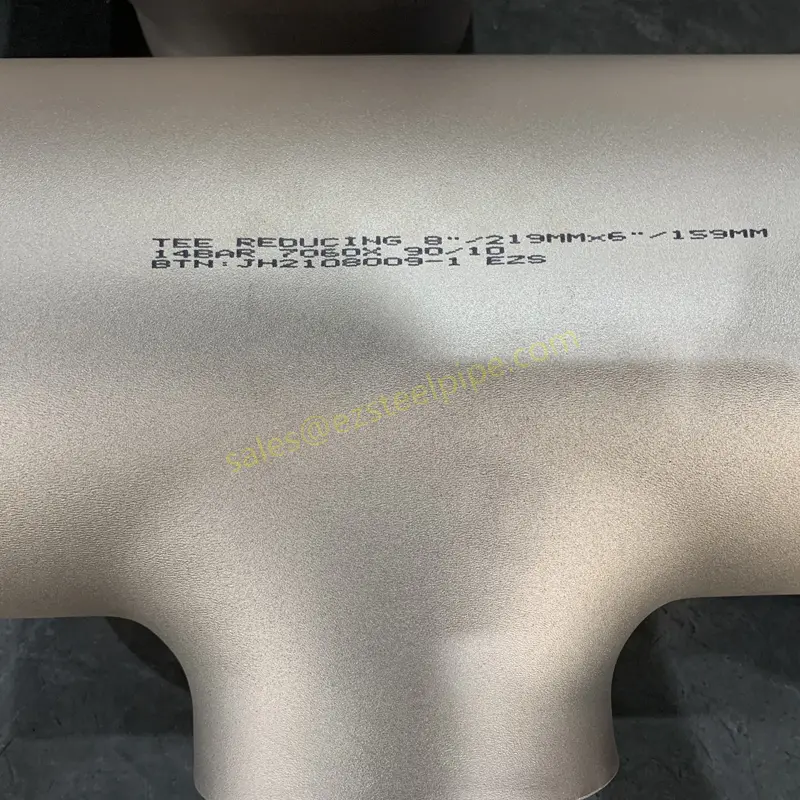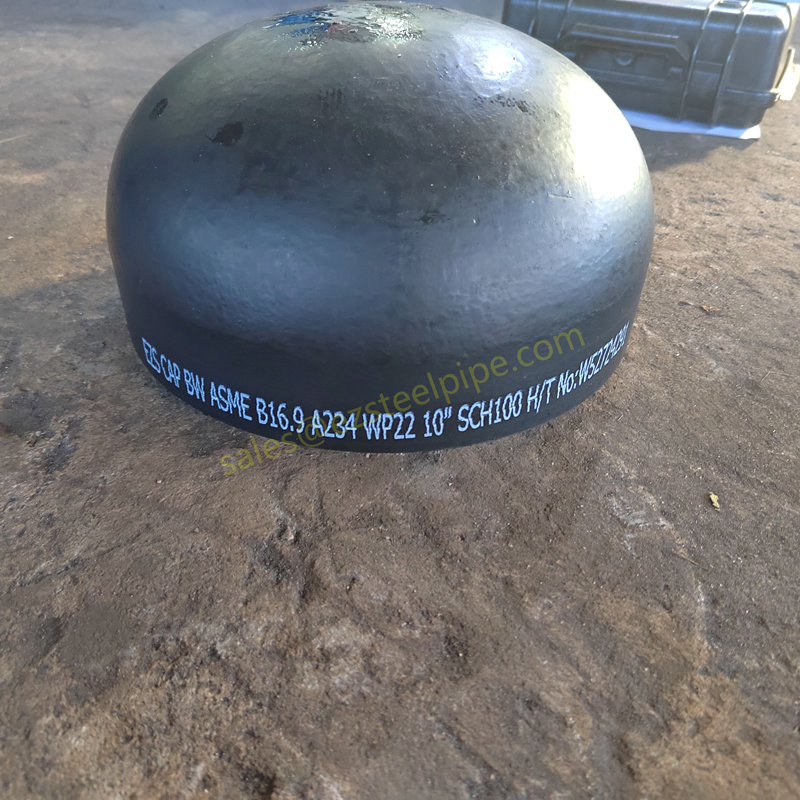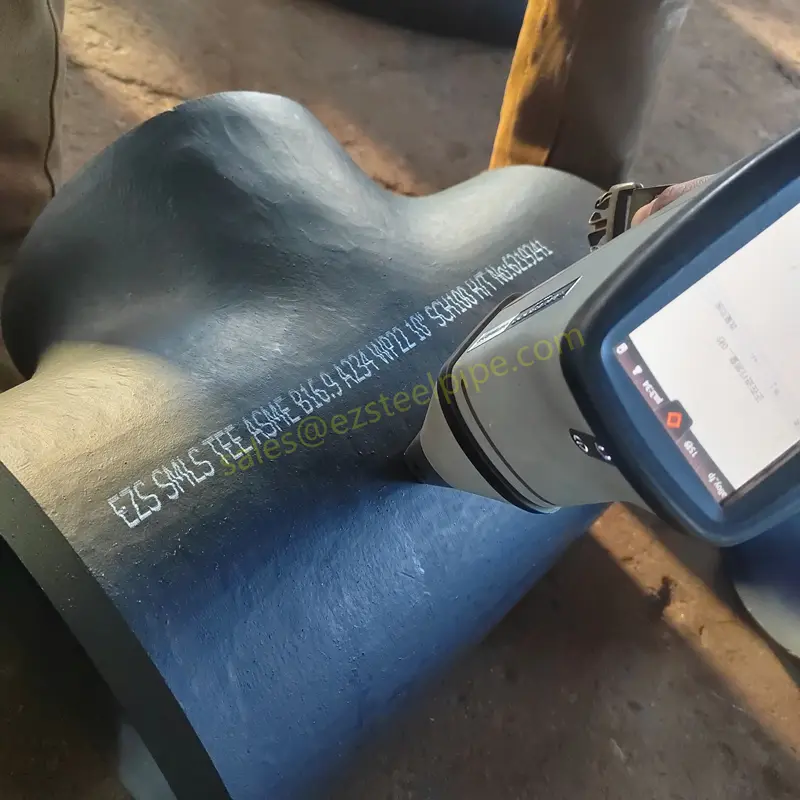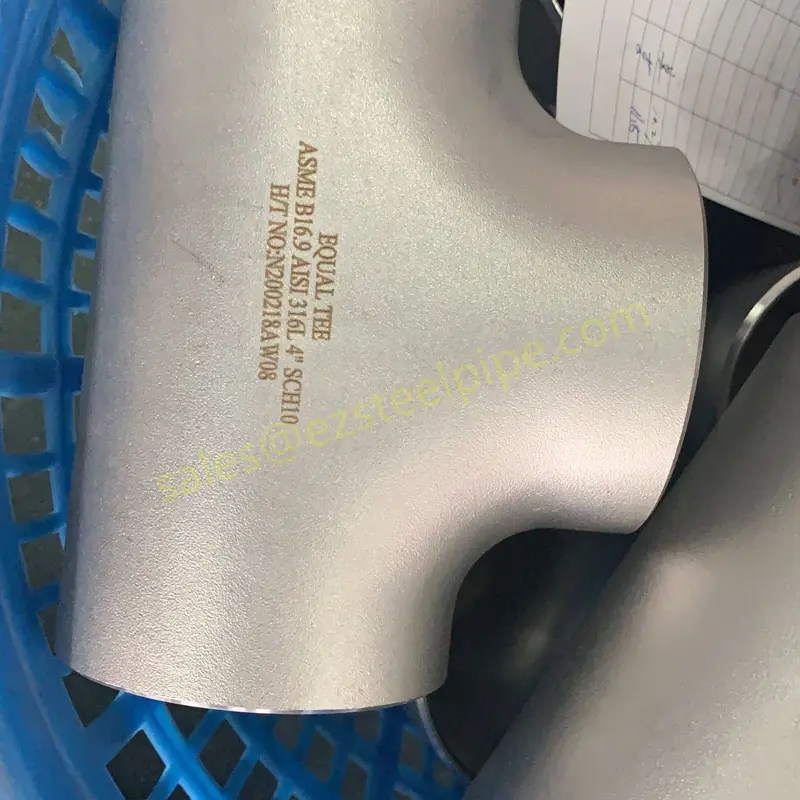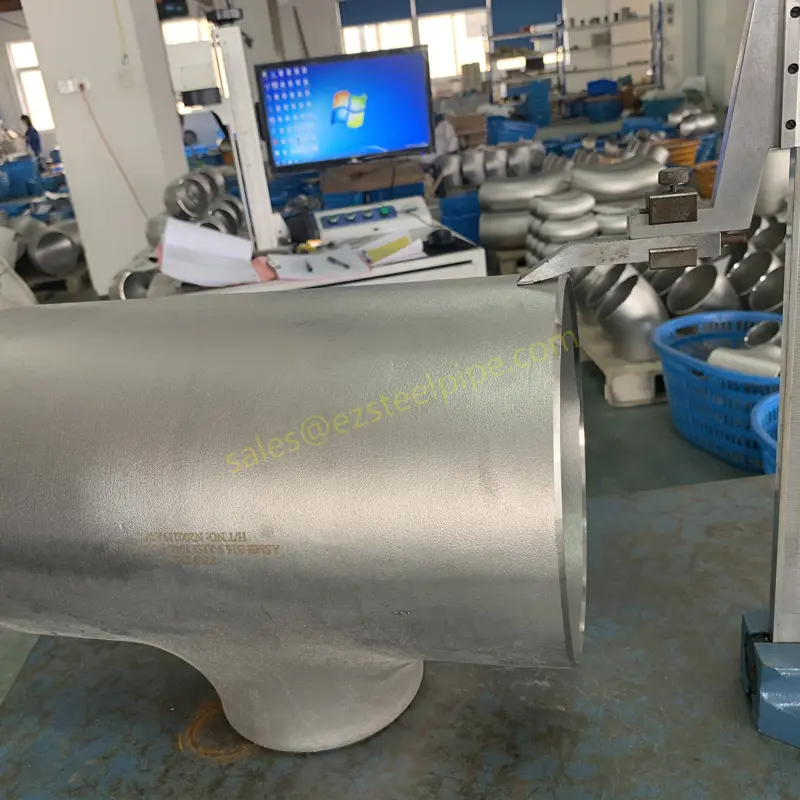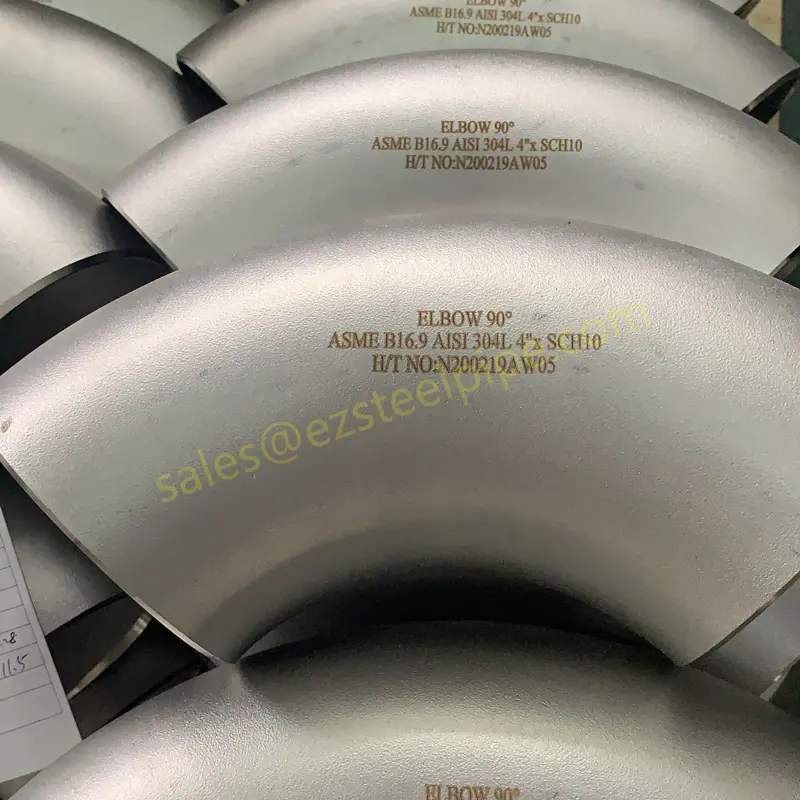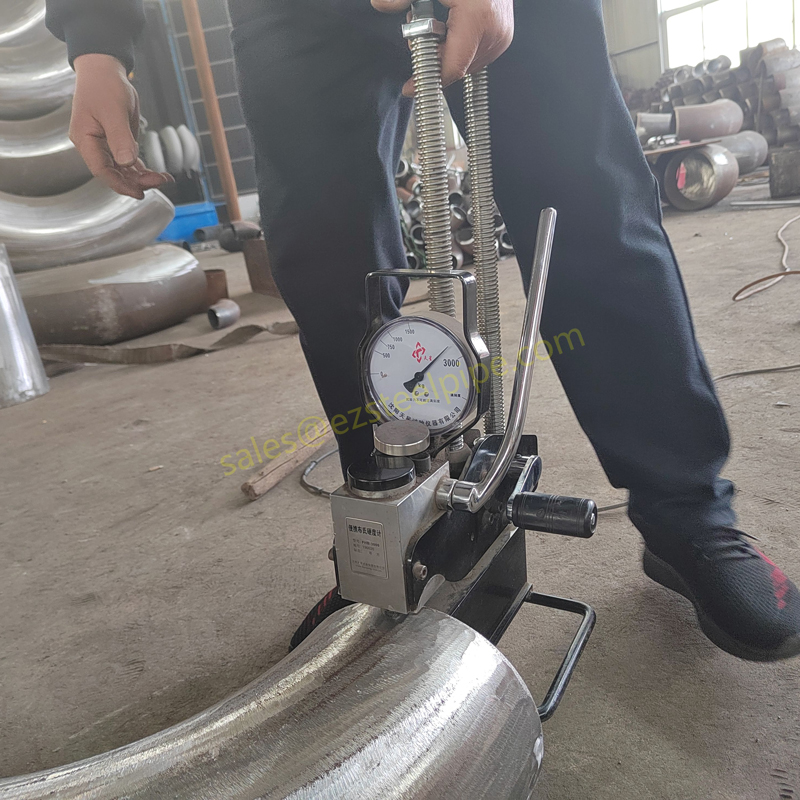- Carbon & Carbon Alloy Steel
- Stainless Steel
- Copper & Nickel Alloy
- Heat Efficiency Tubes
- Pipe Fittings
- Pipe Flanges
- Gasket, Stud Bolt &Nut
- Industrial Valves
01
Butt-Welding Pipe Fittings for Piping System
Butt-Welding Elbow
- Purpose: Changes the direction of flow in a piping system.
- Types:
- 90° Elbow: Changes direction by 90 degrees.
- 45° Elbow: Changes direction by 45 degrees.
- 180° Elbow (Return Bend): Reverses flow direction completely.
- Materials: Carbon steel, stainless steel, alloy steel, duplex steel, etc.
- Ends: Beveled ends for welding.
Butt-Welding Tee
- Purpose: Combines or splits fluid flow in a piping system.
- Types:
- Equal Tee: All three ends are the same size.
- Reducing Tee: One branch is smaller than the main run.
- Applications: Used in pipelines where flow diversion is needed.
Butt-Welding Reducer
- Purpose: Connects pipes of different diameters.
- Types:
- Concentric Reducer: Aligns the centerlines of both pipes (used in vertical lines).
- Eccentric Reducer: Offsets one side (used to avoid air pockets in horizontal lines).
- Applications: Pump inlets, pipe size transitions.
Butt-Welding Cap
- Purpose: Seals the end of a pipe, terminating flow.
- Features:
- Hemispherical or flat design.
- Used for pressure testing or future expansion.
Butt-Welding Stub End (Lap Joint Stub End)
- Purpose: Used with lap joint flanges for easy disassembly.
- Features:
- One end is beveled for welding to the pipe, the other has a flared face to match the lap joint flange.
- Common in systems requiring frequent maintenance.
Butt-Welding Cross
- Purpose: Allows flow in four directions (rarely used due to high stress).
- Applications: Specialized industrial piping systems.
Butt-Welding Union (Limited Use)
- Purpose: Connects pipes but is less common due to welding requirements.
- Alternative: Flanged connections are preferred for disassembly.
Advantages of Butt-Welding Fittings:
✔ High Strength & Leak-proof – No weak points like threads.
✔ Smooth Flow – No internal obstructions.
✔ Suitable for High-Pressure/Temperature – Ideal for oil & gas, chemical plants, power plants.
✔ Long Service Life – Less prone to corrosion at joints.
Standards & Specifications:
- ASME B16.9 (Factory-made wrought butt-welding fittings).
- ASME B16.28 (Wrought steel butt-welding short radius elbows).
- MSS SP-43 (Lightweight stainless steel fittings).
- ASTM/ANSI/API Standards (Material-specific requirements).
Common Materials:
- Carbon Steel (ASTM A234 WPB)
- Stainless Steel (ASTM A403 WP304/316)
- Alloy Steel (ASTM A234 WP5/WP9/WP11)
- Duplex & Super Duplex (ASTM A790/A928)
Applications:
- Oil & Gas Pipelines
- Chemical & Petrochemical Plants
- Power Generation (Steam & Water Lines)
- Shipbuilding & Offshore Platforms
- HVAC & Water Treatment Systems
Butt-welding fittings are preferred in critical applications due to their reliability and structural integrity. Proper welding techniques (e.g., TIG, MIG, or SMAW) and post-weld heat treatment (PWHT) ensure optimal performance.
Butt-welding (BW) pipe fittings must adhere to strict international standards to ensure quality, dimensional consistency, and material integrity. Below are the most widely recognized standards governing their production:
1. ASME (American Society of Mechanical Engineers) Standards
a) ASME B16.9
- Scope: Covers factory-made wrought carbon/alloy steel butt-welding fittings (elbows, tees, reducers, caps, etc.).
- Key Requirements:
- Dimensions, tolerances, and pressure ratings.
- Materials: Carbon steel (A234 WPB), stainless steel (A403), alloy steel (A234 WP5-WP91).
- Common Applications: Oil & gas, power plants, chemical industries.
b) ASME B16.25
- Scope: Standardizes welding end preparations (bevel design) for butt-welding fittings.
- Key Requirements:
- Bevel angles, root face, and groove dimensions for seamless welding.
c) ASME B16.28
- Scope: Covers short-radius elbows (wrought steel) for tight spaces.
- Pressure Ratings: Matches ASME B16.9 but with a smaller bend radius.
2. MSS (Manufacturers Standardization Society) Standards
a) MSS SP-43
- Scope: Lightweight stainless steel butt-welding fittings (similar to ASME B16.9 but with thinner walls).
- Applications: Low-pressure systems (e.g., food processing, water treatment).
b) MSS SP-75
- Scope: High-strength wrought carbon/alloy steel fittings for high-pressure applications.
- Materials: ASTM A860 (e.g., WPHY 42, 52, 60, 65, 70).
c) MSS SP-73
- Scope: Brazing and socket-welding fittings (less common for BW but referenced for hybrid systems).
3. ASTM (American Society for Testing and Materials) Material Standards
a) ASTM A234
- Scope: Carbon/alloy steel pipe fittings (e.g., WPB, WP5, WP9, WP11).
- Grades: Vary by temperature/pressure resistance.
b) ASTM A403
- Scope: Stainless steel fittings (e.g., WP304, WP316, WP321).
- Sub-types:
- WP (Wrought Product): Standard fittings.
- CR (Corrosion Resistant): For aggressive environments.
c) ASTM A420
- Scope: Low-temperature carbon steel fittings (e.g., WPL6 for -46°C/-50°F service).
4. EN (European Norm) Standards
a) EN 10253
- Scope: Butt-welding fittings for carbon/alloy steel (Part 1-4).
- Key Differences vs. ASME:
- EN 10253-1: Non-alloy steel fittings.
- EN 10253-2: Alloy steel with inspection/testing requirements.
- EN 10253-3/4: Stainless steel fittings.
b) EN 1092
- Scope: Flanges (complementary to BW fittings).
5. ISO (International Organization for Standardization) Standards
a) ISO 3419
- Scope: Non-alloy and alloy steel butt-welding fittings (similar to ASME B16.9).
b) ISO 5251
- Scope: Stainless steel BW fittings (equivalent to ASTM A403).
6. JIS (Japanese Industrial Standards)
a) JIS B2311
- Scope: Carbon/alloy steel butt-welding fittings.
- Grades: Similar to ASTM/ASME but with local material codes (e.g., JIS G3454).
7. GOST (Russian Standards)
a) GOST 17375
- Scope: Steel BW elbows, tees, reducers (common in CIS countries).
- Pressure Classes: PN6 to PN100.
Key Considerations for Selection
1. Material Compatibility: Match ASTM/EN grades to fluid/service conditions.
2. Dimensional Compliance: ASME B16.9 vs. EN 10253 (slight size differences).
3. Pressure Ratings: Align with ASME B16.5 (flanges) or EN 1092.
4. Certifications:
- PED 2014/68/EU (Europe).
- NACE MR0175 (H2S service).
- NORSOK (L-150) for offshore.
Comparison Table: ASME vs. EN Standards
| Feature | ASME B16.9 | EN 10253 |
| Scope | Factory-made fittings | Carbon/stainless steel |
| Pressure | Class 150-2500 | PN2.5-PN100 |
| Materials | ASTM A234/A403 | P235GH, 316L, etc. |
| Testing | Hydrostatic optional | Mandatory for EN 10253-2/4 |
Want to order the same ? Contact us Now to send your request!





